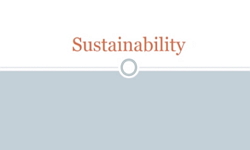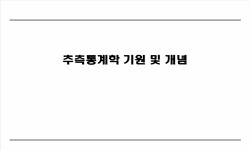본고는 관형사형 어미에 따른 {-을 것 같다}의 중국어 대응표현을 살펴봄으로써 중국인 학습자를 대상으로 한 한국어 교육 자료를 마련하는 것을 시도하였다. 개연성 추측의 경우, ‘应该’...
http://chineseinput.net/에서 pinyin(병음)방식으로 중국어를 변환할 수 있습니다.
변환된 중국어를 복사하여 사용하시면 됩니다.
- 中文 을 입력하시려면 zhongwen을 입력하시고 space를누르시면됩니다.
- 北京 을 입력하시려면 beijing을 입력하시고 space를 누르시면 됩니다.
https://www.riss.kr/link?id=A105398403
- 저자
- 발행기관
- 학술지명
- 권호사항
-
발행연도
2018
-
작성언어
Korean
- 주제어
-
등재정보
KCI등재
-
자료형태
학술저널
-
수록면
219-244(26쪽)
- 제공처
- 소장기관
-
0
상세조회 -
0
다운로드
부가정보
국문 초록 (Abstract)
본고는 관형사형 어미에 따른 {-을 것 같다}의 중국어 대응표현을 살펴봄으로써 중국인 학습자를 대상으로 한 한국어 교육 자료를 마련하는 것을 시도하였다. 개연성 추측의 경우, ‘应该’는 [+근거]의 의미적 특성 때문에 추측 시 근거가 필수적이며 ‘会’는 추측의 근거에 대한 제약이 없기 때문에 자유롭게 대응할 수 있다. 특히, 공손성과 객관 적 추측을 나타내는 ‘-은/던/는 것 같다’에 대응되는 경우, ‘应该’는 ‘会’보다 더 적절한 대응표 현이라고 본다. ‘应该会’는 미래 지향성을 띄며 미래를 추측하는 ‘-을 것 같다’의 의미적 특성 과 잘 호응한다. 가능성 추측의 경우, ‘-은/던/는 것 같다’가 하는 추측은 ‘-을 것 같다’보다 높은 신뢰도에 기반한 추측이기에 객관성이 강한 추측을 할 때 ‘可能’이 더 많이 대응이 된다. 또한 의견이나 주장을 단언하지 않고 완곡하게 제시할 때에도 ‘可能’의 대응이 ‘-은/던/는 것 같다’의 의미적 특성을 더 잘 반영할 수 있다. ‘可能会’는 ‘가능성+미래성’으로 의미 해석이 되기 때문에 미래 의 일에 대한 추측을 하는 ‘-을 것 같다’에 가장 적절한 의미적 대응이 된다. 필연성 추측의 경우, 모든 양태 조동사가 ‘-을 것 같다’에만 대응되었다. ‘要’는 화자 자신의 심리 상태 추측에 대응되며, ‘肯定会’와 같은 필연성 양태 조동사 결합형은 관형사형 어미 ‘- 을’의 미래의 일에 대한 추측 의미와 가장 잘 부합한다.
다국어 초록 (Multilingual Abstract)
The purpose of this study is to find out the corresponding expressions of Korean epistemic speculative {-ul kes kathta} to Mandarin Chinese followed by the adnominal endings. Based on this parallel corpus approach, the author found that both of the mo...
The purpose of this study is to find out the corresponding expressions of Korean epistemic speculative {-ul kes kathta} to Mandarin Chinese followed by the adnominal endings. Based on this parallel corpus approach, the author found that both of the modal auxiliary verbs of ‘probability’ and ‘possibility’ takes a large proportion, however, the modal auxiliary verbs of ‘certainty’ only takes a very small proportion. Therefore, {-ul kes kathta} is more often used in showing speaker‘s prediction of the ’probability’ and ‘possibility’ of a proposition or an event. Although the Chinese modal auxiliary verbs corresponding to Korean speculative showed similar degrees of certainty, the study discerned differences in their usage followed by the change of adnominal endings as the former have unique semantic characteristics. So the author examined how are the modal auxiliary verbs corresponding to {-ul kes kathta} followed by the various adnominal endings. As a conclusion, ‘-ul kes kathta’ is corresponding with ‘Hui’ and ‘Yinggaihui’ of ‘probability’, ‘Kenenghui’ of ‘possibility’, ‘Yao’ and ‘Kendinghui’ of ‘certainty’. And ‘-eun/den/neun kes kathta’ is corresponding with ‘Hui’ of ‘probability’ of ‘Yinggai’ and ‘Keneng’ of ‘possibility’.
목차 (Table of Contents)
- 국문요약
- 1. 서론
- 2. {-을 것 같다}에 관한 이론적 논의
- 3. 관형사형 어미에 따른 {-을 것 같다}의 중국어 대응표현
- 1) {-을 것 같다}에 대응되는 중국어 대응표현
- 국문요약
- 1. 서론
- 2. {-을 것 같다}에 관한 이론적 논의
- 3. 관형사형 어미에 따른 {-을 것 같다}의 중국어 대응표현
- 1) {-을 것 같다}에 대응되는 중국어 대응표현
- 2) ‘-은/던/는/을 것 같다’에 대응되는 중국어 양태 조동사
- 4. 결론
- 참고문헌
- Abstract
동일학술지(권/호) 다른 논문
-
중국어 관용 표현의 색채어 ‘黑’ 인지 의미 형태 분석
- 한중인문학회
- 이명아
- 2018
- KCI등재
-
- 한중인문학회
- 최병우
- 2018
- KCI등재
-
- 한중인문학회
- 朱蕾
- 2018
- KCI등재
-
한국어와 중국어 장사 방언(長沙方言)의 음운 체계 대조 연구
- 한중인문학회
- 여홍령
- 2018
- KCI등재






 eArticle
eArticle






